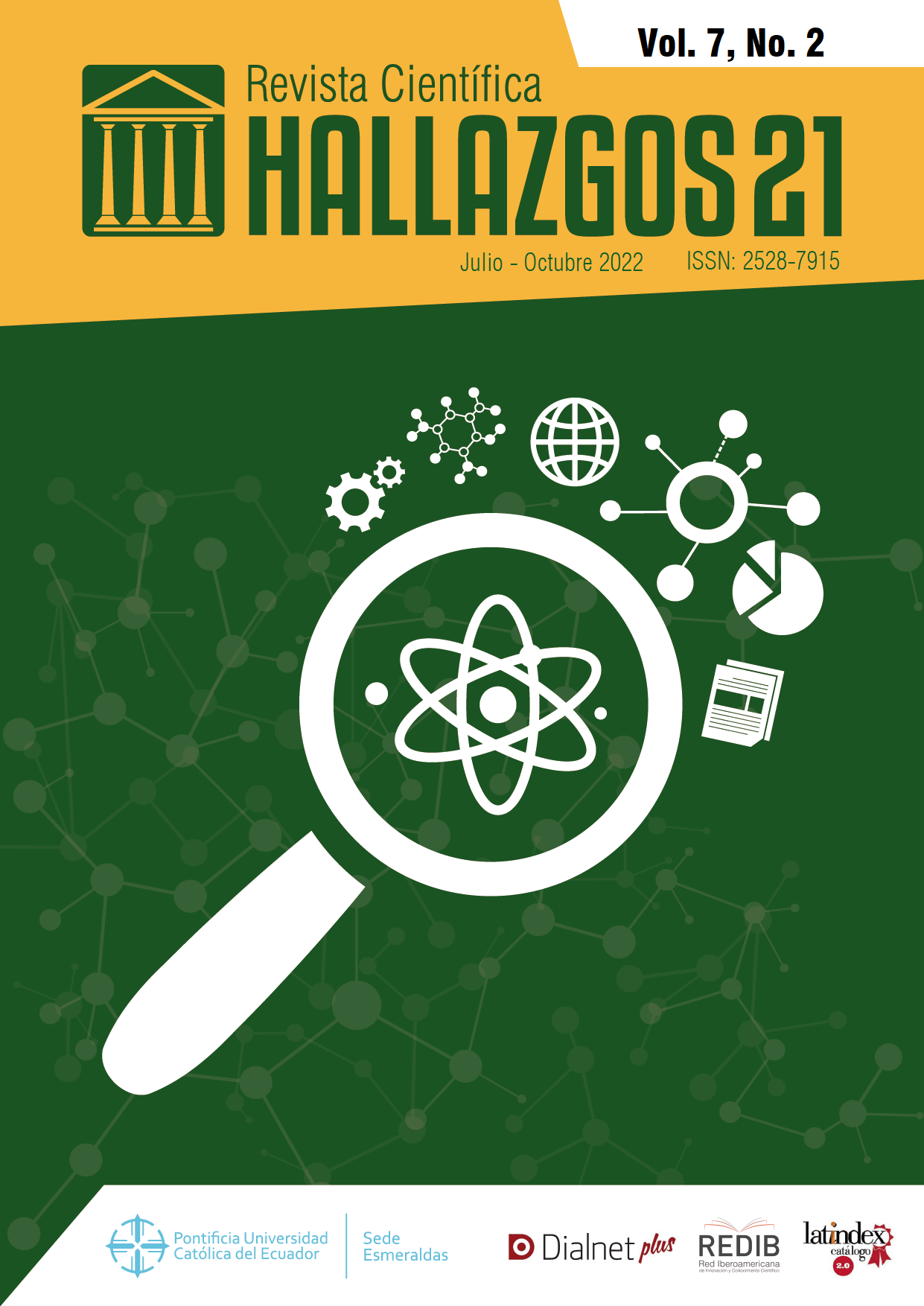Laparoscopic Ambulatory Salpingectomy in a Patient with Ventricle- Peritoneal Derivation. Quito, Ecuador, 2019.
DOI:
https://doi.org/10.69890/hallazgos21.v7i2.581Keywords:
ventricle peritoneal shunt;, ambulatory laparoscopic salpingectomyAbstract
Introduction: Ventricle peritoneal shunt or fistula is a surgery done to relieve increased intracranial pressure due to excess cerebrospinal fluid over the brain (hydrocephalus) where there is an accumulation of fluid from the brain and spinal cord (fluid cerebrospinal). This buildup of fluid causes higher pressure on the brain than normal. Excess pressure, or pressure maintained for a long time, will damage brain tissue. A shunt helps drain excess fluid and relieve pressure in the brain and should be placed as soon as hydrocephalus is diagnosed. Objective: To present the anesthetic management in a patient with ventricle peritoneal shunt during ambulatory laparoscopic salpingectomy.
Method: The case of a 32-year-old female patient with a history of 2 previous caesarean section and diagnosed with hydrocephalus is presented. The VP shunt was performed at age 17 and laparoscopic salpingectomy was performed on an outpatient basis.
Results: Orotracheal general anesthesia was successfully administered, and the patient discharged 8 hours after the immediate postoperative period.
Conclusions: Patients who arrive at the surgical- anesthetic act with ventricle-peritoneal shunts are becoming more frequent and mini-invasive surgery can resolve their medical condition with fewer complications. The anesthetic management in the literature is very controversial and scarce, but the individualized assessment of each patient is required to make decisions and thus achieve satisfactory results.
References
Katati MJ. Hidrocefalia Blog (Internet). Neurocirugía Katati. Granada: Clínica Thinkmedical - 958 10 81. [citado 2022 Feb 12]. Disponible en: https://neurocirugiakatati.com/hidrocefalia
Dabdoub C, Dabdoub C, Chavez M, Villarroel J, Ferrufino J, Coimbra A, et al. Abdominal cerebrospinal fluid pseudocyst: a comparative analysis between children and adults. Childs Nerv Syst [Internet]. 2014 [cited 2015 may 28];30(4):579-89 pp. Disponible en: http://dx.doi.org/10.1007/s00381-014-2370-2.
Popa F, Grigorean VT, Onose G, Popescu M, Strambu V, Sandu AM. Laparoscopic treatment of abdominal complications following ventriculoperitoneal shunt. Journal of Medicine and Life [Internet]. 2009 [cited 2015 may 28]; 2(4):426-36 pp. Disponible en: http://www.ncbi.nlm.nih.gov/pmc/articles/PMC3019022/.
Parelkar SV, Sanghvi BV, Samala DS, Paradkar BA, Patil SH, Oak SN. Two-port laparoscopic management of a giant pseudocyst complicating ventriculoperitoneal shunt. Journal of Indian Association of Pediatric Surgeons [Internet]. 2014 Jul-Sep [cited 2015 mar 15];19(3):181-3 pp. Disponible en: http://www.ncbi.nlm.nih.gov/pmc/articles/PMC4155640/.
Sandesh V. Parelkar, Beejal V. Sanghvi, Devdas S. Samala, Bhupesh A. Paradkar, Shalil H. Patil, and Sanjay N. Oak: Two-port laparoscopic management of a giant pseudocyst complicating ventriculoperitoneal shunt. J Indian Assoc Pediatr Surg. 2014 Jul-Sep;19(3):181–83. doi: 10.4103/0971-9261.136483 PMCID: PMC4155640
Tomiyama A, Harashina J-i, Kimura H, Ito K, Honda Y, Yanai H, et al. An Intra-Abdominal Pseudocyst around a Ventriculoperitoneal Shunt due to Streptococcus Infection 7 Years after Shunt Surgery. Surgery Research and Practice [Internet]. 2014 [cited 2015 mar 22]; 2014:898510. Disponible en: http://www.ncbi.nlm.nih.gov/pmc/articles/PMC4208502/ http://www.ncbi.nlm.nih.gov/pmc/articles/PMC4208502/pdf/SRP2014-898510.pdf .
Park YS, Park IS, Park KB, Lee CH, Hwang SH, Han JW. Laparotomy versus Laparoscopic Placement of Distal Catheter in Ventriculoperitoneal Shunt Procedure. Journal of Korean Neurosurgical Society [Internet]. 2010 [cited 2015 may 03];48(4):325-9. Disponible en: http://www.ncbi.nlm.nih.gov/pmc/articles/PMC2982910/
Schucht P, Banz V, Trochsler M, Iff S, Krähenbühl AK, Reinert M, et al. Laparoscopically assisted ventriculoperitoneal shunt placement: a prospective randomized controlled trial. Journal of Neurosurgery [Internet]. 2015 [cited 2015 jul 20];122(5):1058-67. Disponible en: http://thejns.org/doi/abs/10.3171/2014.9.JNS132791
Shao Y, Li M, Sun JL, Wang P, Li Xk, Zhang QL, et al. A Laparoscopic Approach to Ventriculoperitoneal Shunt Placement with a Novel Fixation Method for Distal Shunt Catheter in the Treatment of Hydrocephalus. Minim Invasive Neurosurg [Internet]. 2011 [cited 2015 feb 12]; 54(01):44-7. Disponible en: https:// www.thieme-connect.com/products/ejournals/html/10.1055/s-0031-1271680 https:// www.thieme-connect.com/products/ejournals/pdf/10.1055/s-0031-1271680.pdf .
Published
How to Cite
Issue
Section
License
Los artículos enviados a la Revista Científica Hallazgos21 deberán ser totalmente originales e inéditos.
Los autores son los responsables de los textos y las imágenes incluidas en los artículos y no necesariamente reflejan el pensamiento de la editorial o de la Pontificia Universidad Católica del Ecuador, Sede Esmeraldas (PUCESE).
Los autores disponen cederle a la Revista Científica Hallazgos21 todos los derechos inherentes para la edición, publicación y distribución o divulgación del mismo.
Se autoriza a las revistas firmantes de los acuerdos de Encuentros de Revistas Latinoamericanas para reproducir en parte o totalmente los artículos con la sola mención de la fuente claramente señalada.







